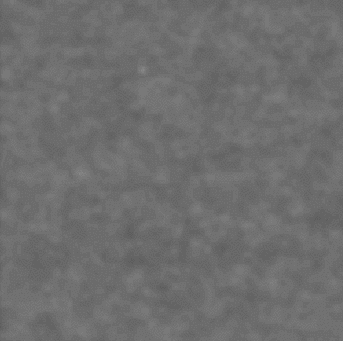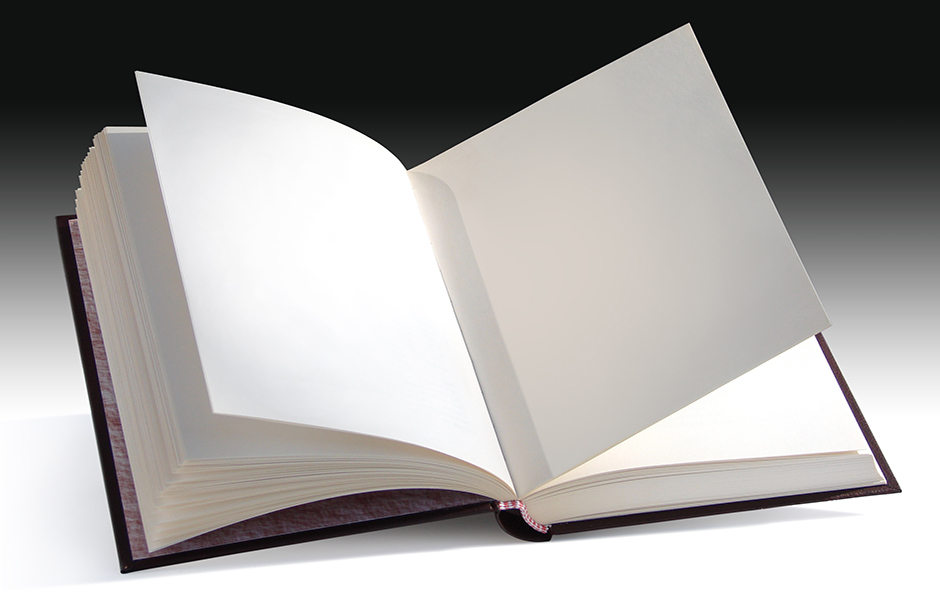Choosing the best paper for your book is a decision that should not be rushed – I pick up many books only to notice that the choice of paper is in conflict with the content. This might not be so obvious to the novice, but often there will be something that is difficult to put your finger on about the feel of a book that doesn’t make it feel just right. Once your book is printed, it’s too late to have a discussion like this, but all too often it is only after a book is delivered that these subtle details are picked up on, buy you or your reader. This is a conversation that needs to be had during the book planning stage, ideally before the artwork is created, so that the pages can be designed and the book created with the choice of paper in mind.
Whilst thinking about paper choice, sometimes just seeing a blank paper sample can be misleading. Yes the surface might feel smooth and the paper might look nice and white, but have you thought about the following:
Will the print show through too much from the other side (opacity)?
Will the book be too thick or too thin (caliper)?
Will the book be too heavy to fit within a certain postal band (grammage)?
Will the type of paper restrict your choice of binding method?
Will the text be easy to read on this paper or will it reflect too much and give an uncomfortable glare (finish)?
Would the text be easier to read on an off white or coloured paper?
Will the pages turn easily or will the paper want to resist being flicked through (grain direction)?
Paper Opacity:
All paper is to an extent opaque, ie if you illuminate it from behind you will see the light! If your paper is too translucent, the print from the image on the reverse of the paper will show through interfering with the readability of the content. This can be helped to a certain extent by page layout and choice of backgrounds. Uncoated paper has better opacity than the same grammage of coated paper. Mechanical paper has better opacity than woodfree paper at the same grammage. In general the higher the content of sizing or coating in the paper, the more translucent the paper becomes, so if you are concerned about show through, there are lots of alternatives than just increasing the paper weight.
Paper Consistency:

Solid ink areas exhibit mottling when printed on paper with poor paper fibre dispersion
If you are wanting to print areas of solid ink there are definitely some papers which should be out of bounds because unless you are looking for an unusual effect you will generally want to achieve a smooth, mottle-free result. Printing onto a paper coating generally gives a smoother result than printing directly onto paper fibers, but some papers are made more consistently than others, eg the dispersion of the fibers is more uniform or the coating or sizing is applied more evenly. So a non-uniform paper can cause unwanted results such as mottling.
Paper Coatings / sizing and paper finish:
The application of coatings to the surface of paper, which became popular around the middle of the 20th Century, has generally been a good thing, because overall it improves the printability of the paper. By printability, I mean that pictures look punchier, ink dries faster and it is less susceptible to being scuffed and the surface feels smoother. From a printers point of view, coated papers use less ink and presses can be generally run at much faster speeds. So you would think that everything looks rosy, from a production point of view and indeed coated papers are the most commonly used papers for printing and are also the cheapest and I suspect that most printers would prefer to print on coated papers all day long. However, there are some key disadvantages to printing on coated papers – especially when you look at it from the book publishers or readers point of view:
Coated papers are thinner than their uncoated equivalent. This is not good if you want to increase spine width.
Coated papers are more flimsy than their uncoated equivalent. This is not good if you want to give a more substantial feel to your book.
Coated papers are weaker and more prone to tearing than uncoated papers. Not good if you are producing a book that is going to take a lot of hammer or you are concerned about ultimate longevity for archive purposes.
Coated papers do not adhere to a glued binding as strongly or as permanently as uncoated papers. This is because the strength in a binding comes from the glue adhering to the actual paper fibres themselves, not the coating.
Coated papers have more glare or light reflection than uncoated papers (especially gloss and silk finishes). This is definitely not desirable for reading text. Indeed, too much glare can cause reading to become uncomfortable for some.
Don’t get me wrong, there are many, many cases when using coated papers is the best and only option and some of the disadvantages can be removed by using a heavier coated paper, or a coated paper with a matt finish, but make sure you have looked at all options first.
Mechanical or Woodfree Paper?
For solid wood fibers to be broken up into a fluid water solution, so that they may be squired onto the wire of a paper machine, all the fibers have to undergo a multi-stage mechanical mashing and filtering process. This process can be significantly helped by introducing chemicals to aid the breakdown of the fibers, make the fibers whiter by bleaching and at the same time dissolve any unwanted glue called lignin which holds the wood fibers together.
Papers produced with the aid of these chemicals are called Woodfree papers. They are whiter, and stronger than the equivalent mechanical paper. Woodfree papers will also not turn yellow with age as it is the lignin glue that is responsible for this characteristic.
Papers produced without the aid of these chemicals are called Mechanical papers. Mechanical papers are off white, and are weaker than woodfree papers. However they have 4 significant advantages which are especially relevant for producing bookwove novel papers: Firstly, they are bulkier (thicker) than the equivalent woodfree paper. Secondly, they have better opacity than the equivalent woodfree paper, thirdly their off white colour is more desirable for reading comfort than a bright white paper and lastly they are considered to be more environmentally friendly than woodfree papers because their manufacture does not involve chemical bleaching.
Many traditional bookwove papers use mechanical paper or a mixture of woodfree and mechanical pulp to produce the paper (Part-Mech).
Cover Paper
I am talking here about soft back covers, not hardback covers.
A common complaint I hear is: The cover of my book I’ve just had printed is just too flimsy. It annoys me to think that publishers and authors alike are using a printer that doesn’t address this simple matter.
I suspect that problem arises because of a common misunderstanding: Some people assume that Grammage (or paper weight) is equal to stiffness. This is not true. Much more important is the type of board being used for the cover.
The idea cover board material is one side coated board. As the name suggests, this board only has coating on one side – the outside of the cover. Because it is only coated on one side this paper is upto 50% stiffer than the equivalent matt or gloss coated paper. Therefore a 250gsm one side coated board is more than adequate for standard a softback book, whereas a 250gsm gloss coated artpaper would be woefully flimsy. One side coated board has another advantage in covering softback books – the binding glue sticks to the uncoated reverse of the board more permanently than a coated board.
Occasionally, is is necessary to print colour images onto the inside of a cover, which is when it is inappropriate to use a one side coated card, because colour does not reproduce well on the uncoated reverse of the board. In this case, to achieve the same stiffness as a 250gsm one side coated board, you need to select at least 300gsm, more preferably 350gsm matt coated board. Some digital printers struggle to print above 300gsm, so it is important to be aware of these issues up front.
Digital Printing Papers
Some digital printers are severely restricted by the types of paper that they can put through their machines, so it is essential to check with your printer that they are able to satisfy your requirements specifically with regards to printing books. Many digital presses must use papers of significantly lower moisture content than papers used for conventional litho printing. This can make them more susceptible to books demonstrating “wavey” pages on the foredge (the edge of the book opposite the spine), especially if paper with the wrong grain direction is used.
Environmental Factors
Having worked for and visited many paper mills in Finland and seen first hand the pride that these companies have in managing their forestry stocks to ensure that they do not run out of trees and how they ensure that by planting 3 trees for every 1 that is cut down, I was convinced that paper produced by such responsibly managed organizations was indeed a truly sustainable resource. The argument then naturally moved on to there being no good reason to recycle paper, especially as the process of returning enough waste paper to the mill for recycling and then the chemical intensive process of de-inking paper was in itself very environmentally unfriendly. My feeling has always been that recycling paper is much more useful for getting waste paper out of landfill sites, than it is for preventing de-forestation. True recycled papers (using post-consumer waste) are available, although they are much more expensive. You can read more about paper as a sustainable resource here: http://www.twosides.info/
Wherever you see the FSC (Forestry Stewardship Council) logo you can be reassured that all the companies involved in the chain of supply to bring that paper to you have been certified as managing tree resources in a sustainable manner. Ask us about using paper that enables you to print this logo on your publication.
Common Book Printing Paper Grades and their uses:
- Matt Coated Paper: Books containing high quality colour or black and white imagery alongside large areas of text.
- Silk Coated Paper: Books containing high quality colour or black and white imagery alongside small areas of text.
- Gloss Coated Paper: Books containing high quality colour or black and white imagery alongside minimal areas of text.
- Bookwove: MonoBooks containing predominantly text with minimal imagery.
- Bulky News: Mono Books containing only text.
- Woodfree Offset: Mono Books containing predominantly text with some line imagery. Sometimes used to print books containing colour or black and white imagery alongside large areas of text where a dead matt effect is required.
- Smooth sized woodfree (Pre-print): Mono Books containing predominantly text with some line imagery. Sometimes used to print books containing colour or black and white imagery alongside large areas of text where a dead matt effect is required.
- One side coated board: Cover board of choice for paperback books.
Please feel free to contact me if you would like to discuss any of the above or suggest improvements to my blog.
David Exley david@beamreachuk.co.uk
Written by David Exley
David has an Honours Degree in Printing and Packaging Technology and has worked in both technical and sales roles in both the Paper and Printing industries for over 20 years.





